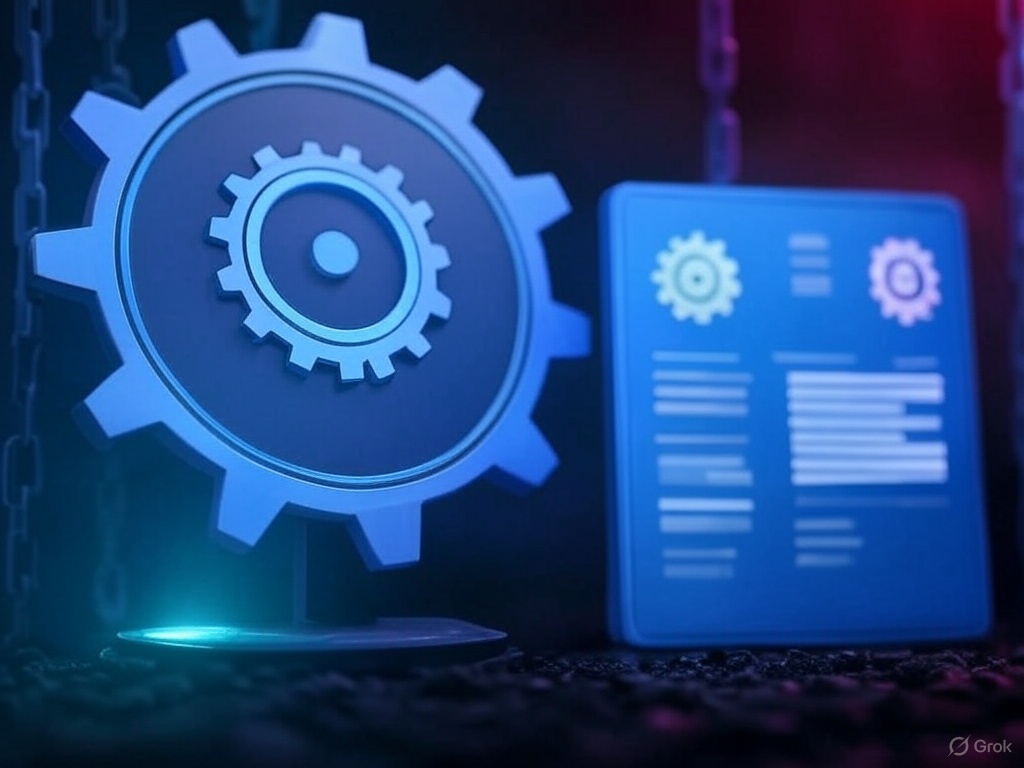Understanding System, Token, and Associated Token Programs: A Guide for Blockchain Developers
 Rajtilak Pandey
Rajtilak Pandey
Blockchain development can often feel like navigating a complex maze, especially when exploring Solana’s ecosystem. Terms like "system program," "token program," and "associated token program" are frequently mentioned, but what do they actually mean? Whether you’re building decentralized applications (dApps) or simply exploring Solana’s architecture, understanding these concepts is foundational. Let’s break them down step-by-step
What is a System Program?
The system program is the bedrock of Solana’s account management. It’s a native program—precompiled and deployed by the Solana team—that governs the creation, management, and transfer of basic accounts on the blockchain. Think of it as the "general manager" of Solana’s ledger.
Key Functionality: The system program allows you to create new accounts, allocate space for data, and transfer SOL (Solana’s native cryptocurrency) between accounts.
Use Case: When a user sends SOL to another wallet, the system program processes that transaction. It’s also invoked when initializing a new account to store data or tokens.
Ownership: Accounts created by the system program are owned by it, meaning only the system program can modify their core structure (like resizing or closing them).
In short, the system program handles the low-level plumbing of Solana’s account model. It’s simple, efficient, and essential—but it doesn’t deal with tokens directly.
Enter the Token Program
The token program steps in where the system program leaves off: it’s all about managing tokenized assets. Also a native Solana program, the token program (specifically, the SPL Token Program) enables the creation, transfer, and management of fungible and non-fungible tokens (NFTs).
Key Functionality: It lets you mint new tokens, burn them, transfer them between accounts, and set authority over token-related actions (e.g., who can mint more tokens).
How It Works: Tokens live in token accounts, which are distinct from the wallet addresses you might be familiar with. A token account is owned by the token program and stores the balance of a specific token type for a specific owner.
Use Case: Want to create a custom cryptocurrency or an NFT collection? The token program is your go-to. For example, when you send 10 USDC to a friend, the token program updates the respective token accounts.
The catch? Every token type (e.g., USDC, a custom coin) requires its own token account for each user. This can lead to clutter—imagine a wallet needing dozens of token accounts for every token it holds!
Associated Token Program: Streamlining Token Management
This is where the associated token program (ATP) shines. It’s not a standalone program but rather a convention built on top of the token program to simplify token account management. The idea is to create a deterministic, default token account for each user-token pair, reducing complexity for developers and users alike.
Key Functionality: The ATP calculates a unique associated token account (ATA) address for a given wallet and token mint using a deterministic formula. This ATA becomes the default account for holding that token.
How It Works: The address is derived from the wallet’s public key, the token mint’s public key, and the token program ID, ensuring it’s consistent and predictable. Developers can use helper functions (like those in Solana’s SPL libraries) to create or fetch ATAs effortlessly.
Use Case: When a dApp sends tokens to a user, it targets their ATA. No need to manually create token accounts or guess where to send tokens—ATAs standardize the process.
For example, if I send you 50 MYCOIN, the dApp checks your ATA for MYCOIN. If it doesn’t exist, it’s created on the fly (funded by the sender or user, depending on the setup). This eliminates the chaos of managing multiple token accounts manually.
Comparing the Three: A Quick Breakdown
| Aspect | System Program | Token Program | Associated Token Program |
| Purpose | Manage accounts and SOL | Manage tokens | Simplify token account creation |
| Scope | Native SOL transfers | Token minting/transfer | Default token accounts |
| Account Ownership | System program | Token program | Token program (via ATA) |
| Complexity | Low | Medium | Low (with libraries) |
| Use Case | Send SOL, create accounts | Create/send tokens | Streamline token interactions |
Why This Matters for Developers
Understanding these layers is crucial for building efficient Solana dApps:
Use the system program for SOL transactions or initializing accounts.
Leverage the token program to build token-based features like in-game currencies or NFT marketplaces.
Adopt ATAs to enhance user experience by minimizing account management overhead.
For instance, a decentralized exchange (DEX) might use all three: the system program to handle SOL deposits, the token program to swap custom tokens, and ATAs to ensure users receive tokens in predictable accounts.
Final Thoughts
The system program, token program, and associated token program are like gears in Solana’s machinery—each serves a distinct purpose, yet they work together seamlessly. As a developer, mastering these concepts unlocks the ability to craft intuitive, scalable blockchain applications. Whether you’re sending SOL, minting tokens, or simplifying UX with ATAs, knowing which tool to use (and when) is half the battle.
So, next time you’re coding on Solana, ask yourself: am I moving SOL, managing tokens, or optimizing for usability? The answer will guide you to the right program—and your users will thank you for it.
Subscribe to my newsletter
Read articles from Rajtilak Pandey directly inside your inbox. Subscribe to the newsletter, and don't miss out.
Written by
